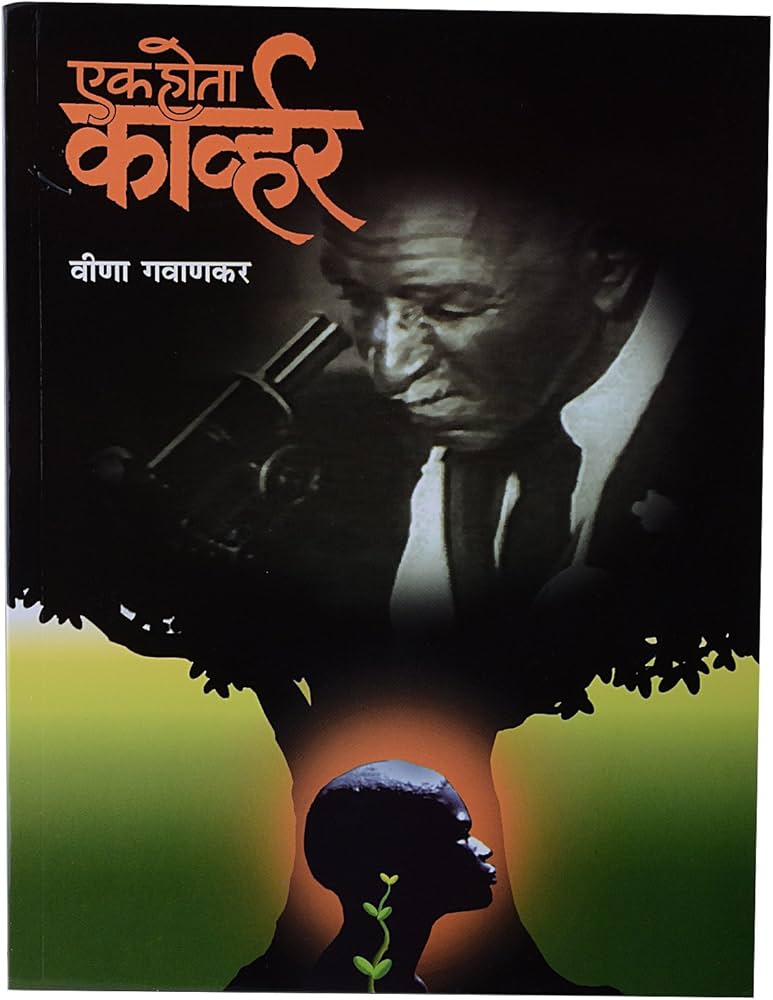Book Review : Jadhav Dhanashree Vilas ,MGV's Loknete Vyankatrao Hiray Arts Science and Commerce College Panchvati, Nashik. This book tells the incredible story of George Washington Carver, a man who rose from the harshest beginnings to become one of the
Read More
Book Review : Jadhav Dhanashree Vilas ,MGV’s Loknete Vyankatrao Hiray Arts Science and Commerce College Panchvati, Nashik.
This book tells the incredible story of George Washington Carver, a man
who rose from the harshest beginnings to become one of the most
admired scientists and humanitarians in history. Born into slavery around
1864 in Missouri, George’s early life was marked by loss, poverty, and
struggle. His mother, Mary, was kidnapped when he was just a baby, and
she was never found. Orphaned and frail, George was taken in by Moses
and Susan Carver, who raised him alongside his older brother, Jim.
From the beginning, George was different. Weak and sickly, he wasn’t
strong enough for farm work, so he stayed close to Susan, helping with
household chores. But even as a child, his mind was full of curiosity.
While other kids played, George wandered in nature, talking to plants,
observing animals, and experimenting with flowers and leaves to make
dyes. His quiet nature and sharp observation set him apart, though it also
meant he was often alone.
When slavery ended, life didn’t get easier for George. The Carvers
treated him kindly, but the world outside was still harsh. Local schools
wouldn’t admit Black children, so George left home as a young boy to
find an education. He ended up in Neosho, Kansas, where he did odd
jobs to survive—cleaning, cooking, and sometimes sleeping in barns.
Despite the hardships, he never gave up on his dream of learning. Along
the way, kind strangers, like the Martin family and Aunt Maria, offered
him brief moments of care and encouragement, which helped him keep
going.
The book beautifully captures George’s perseverance. He faced rejection,
including being denied admission to Highland University because of his
race, but he refused to give up. When asked why he wanted to keep
studying when most Black people at the time didn’t have the same
opportunities, George’s answer was simple and powerful: “I have work to
do, and I need to be ready for it.”
Eventually, George found his way to Simpson College in Iowa, where he
was accepted and encouraged. It was here that his talents truly began to
flourish. He had a love for art and nature, and his detailed sketches of
plants caught the attention of his teachers. Though he initially wanted to
be an artist, he realized he could make a greater impact by studying
agriculture and science. This decision changed not only his life but the
lives of countless others.
The heart of the book is George’s work at Tuskegee Institute, where he
started teaching in 1896. He arrived with an annual salary of $1,500 but
no resources—no lab, no equipment, not even a proper garden. But
George was resourceful. He turned everyday items into scientific tools: a
pot of ink became a Bunsen burner, kitchen tins stored chemicals, and
teacups served as beakers. These humble beginnings are now a part of
history, with his makeshift lab equipment displayed in museums.
George’s innovative methods transformed farming in the South. He
taught farmers about crop rotation, soil health, and the importance of
planting peanuts, sweet potatoes, and tomatoes to restore nutrients to the
soil. But he didn’t stop there. He created over 100 products from peanuts
and 115 from tomatoes, including food items, dyes, and even adhesives.
His work helped farmers improve their livelihoods and fed many people
during tough times, including wars and the Great Depression.
What stands out in the book is George’s compassion and humility. He
didn’t just focus on science; he cared deeply about people. He started a
mobile agricultural school, traveling to remote areas to teach farmers not
just about crops but about basic hygiene, nutrition, and how to live
healthier lives. He even helped people make blankets, build toilets, and
paint their homes with soil-based colors. His approach was simple: “Start
where you are, with what you have, make something out of it, and never
be satisfied.”
The book also highlights George’s spiritual side. He saw beauty and
purpose in everything, from the colors of nature to the diversity of
people. Even in the face of discrimination and rejection, he remained
patient and kind, believing that his work was part of a bigger plan. This
sense of purpose kept him going through the toughest times.
Despite his accomplishments, George lived a simple life. He didn’t seek
wealth or fame; he was dedicated to helping others. His work earned him
global recognition, and in 1928, Simpson College awarded him an
honorary doctorate. But even with all the accolades, he remained humble,
always focused on what he could do next to make the world better.
The beauty of this book lies in how it brings George’s humanity to life.
It’s not just a story about a great scientist; it’s about a man who faced
unimaginable challenges but never let them define him. It’s about
someone who found strength in his weaknesses, who saw hope where
others saw despair, and who used his gifts to uplift those around him.
In the end, George Washington Carver’s story is one of resilience,
creativity, and unwavering faith in the goodness of life. This book is a
powerful reminder that even in the face of adversity, one person can
make a difference. It’s an inspiring and deeply human tale that stays with
you long after you’ve turned the last page.
Show Less

